Local Weather Desert Tours and Sightseeing: Essential Guide and Tips
Local Weather Desert Tours : Understanding the Desert Climate
Welcome to our extensive guide on local weather conditions for desert tours and sightseeing. Understanding the weather examples in the desert is significant for arranging your activities, guaranteeing your security, and boosting your delight. So, on this page, we give you fundamental tips, bits of knowledge, and commonsense exhortation to assist you with exploring the special climate of the desert and capitalize on your experience. We should begin!
Local Weather Desert Tours and Sightseeing: Frequently Asked Questions
How can I access reliable local weather information for my desert tours?
To get dependable local weather information, you can allude to official meteorological websites, download respectable weather applications, check local news channels, or investigate online weather entrances. This information gives precise and cutting-edge weather figures, climate information, and serious weather alarms for your particular area of interest.
Which weather apps are recommended for checking local weather forecasts?
There are a few trustworthy weather applications accessible for cell phones and tablets. A few well-known decisions incorporate Accurate Weather, The Weather Channel, Weather Underground, and Dull Sky. Make a point to peruse client surveys and pick an application that suits your inclinations and offers dependable and definite weather data.
Can I rely on local news channels for accurate weather updates?
Yes, local news channels often include weather segments that provide current conditions, forecasts, and weather-related news. They are a reliable source for obtaining local weather information, especially for immediate updates and severe weather alerts in your area.
Local Weather Desert Tours: Explanation of the Desert Climate
The desert climate is portrayed by its extraordinary natural circumstances, which altogether contrast with different locales. Deserts are known for their bone-dry nature, with exceptionally low precipitation and meager vegetation. The shortfall of huge water bodies or vegetation cover adds to the particular climate. The absence of mugginess in desert locales prompts quick temperature changes, especially among constantly.
Understanding the desert climate is fundamental for arranging your desert tours and sightseeing activities. The aridity and extraordinary intensity make it vital to avoid potential risks to guarantee your solace and well-being. Be ready for the dry air, constant sun, and possibly brutal weather circumstances that might win in the desert.
Local Weather Desert Tours: Effects of Elevation
Height assumes a critical part in molding the desert climate and its related weather examples. In higher-height desert regions, temperatures are by and large cooler because of the diminishing in barometrical strain. Subsequently, precipitous desert areas might encounter more moderate temperatures contrasted with lower-lying desert fields.
In the event that you’re wanting to investigate raised desert territories, for example, desert mountain ranges, be ready for possibly cooler temperatures and more grounded breezes.
Understanding the impacts of height in the desert can upgrade your readiness and in general insight during tours and sightseeing. Consider the rise of your picked desert objective and change your arrangements in like manner.
Local Weather Desert Tours: Seasonal Variations
Occasional varieties in the desert can essentially affect the weather circumstances and generally speaking experience. It’s vital to consider the planning of your visit to line up with good weather circumstances. Here are a few critical occasional varieties in the desert climate:
- Summer: Summers in the desert are portrayed by burning intensity and long sunlight hours. Daytime temperatures can take off to outrageous levels, frequently surpassing 100°F (38°C) or higher. It’s crucial to plan exercises during the cooler pieces of the day and avoid the potential risk of remaining hydrated and safeguarded from the sun.
- Winter: Winters in the desert can bring more moderate temperatures during the day, going from 60°F to 75°F (15°C to 24°C). In any case, evening temperatures can decrease essentially, now and again falling underneath freezing. It’s prudent to dress in layers and convey comfortable attire for the colder nights.
- Spring and Autumn: These temporary seasons offer more moderate temperatures contrasted with summer and winter. Days are by and large warm and lovely, while evenings can in any case be cool. It’s a famous time for desert tours and sightseeing, as the weather is for the most part more agreeable for open air exercises.
Local Weather Desert Tours: Temperature Ranges
Desert locales experience prominent temperature ranges because of their one-of-a-kind climate. During the day, temperatures can arrive at boiling highs, while evenings can get huge decreases in temperature. Here is an outline of ordinary temperature ranges you can anticipate in the desert:
- Summer: Daytime temperatures in summer can exceed 100°F (38°C), especially during peak hours. Nighttime temperatures often cool down, ranging between 70°F and 80°F (21°C to 27°C). Be prepared for the extreme heat during the day and sudden drops in temperature after sunset.
- Winter: Daytime temperatures in winter are milder, ranging from 60°F to 75°F (15°C to 24°C), providing relief from the scorching summer heat. However, nighttime temperatures can dip to near or below freezing, especially in more arid desert regions. Dressing in layers is advisable to adapt to the temperature changes throughout the day.
- Spring and Autumn: These seasons offer more comfortable temperature ranges, with daytime temperatures averaging between 75°F and 90°F (24°C to 32°C). Nights are relatively cooler, ranging from 50°F to 65°F (10°C to 18°C). It’s still essential to prepare for temperature variations, especially during early mornings and evenings.
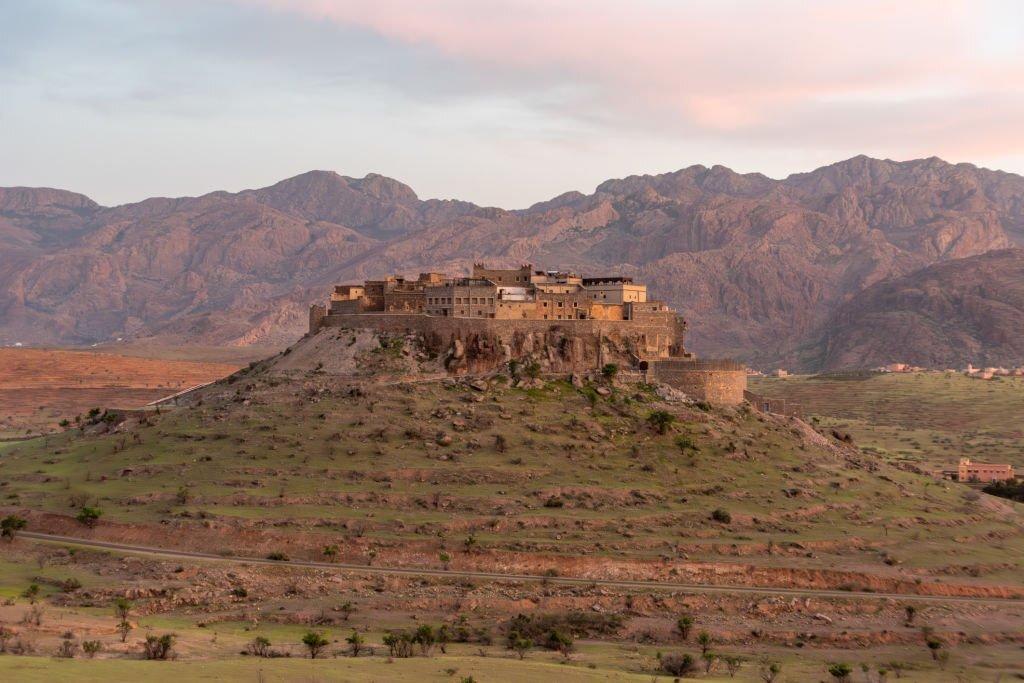
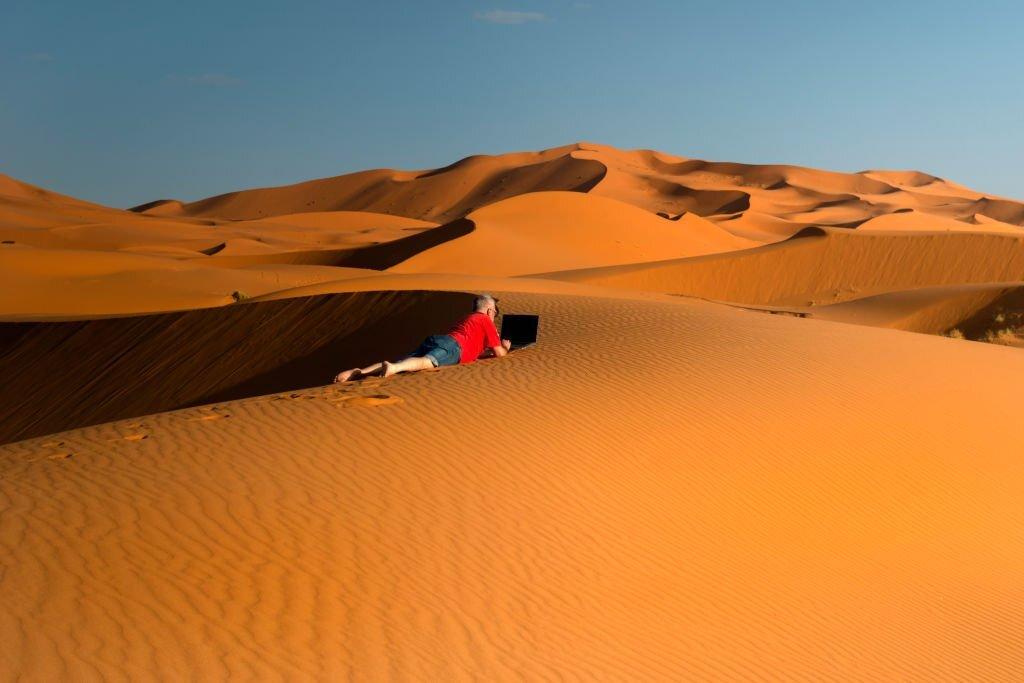
Planning for Desert Tours and Sightseeing
Local Weather Desert Tours: Best Time to Visit
Determining the best time to visit the desert for tours and sightseeing is critical for a charming and agreeable experience. While deserts are known for their outrageous intensity, there are explicit periods when the weather is better. Consider the accompanying variables while arranging your desert trip:
- Weather: Exploration of The typical temperatures and weather circumstances over time. For the most part, the best chance to visit is during the cooler months, like spring (Walk to May) and pre-winter (September to November), when temperatures are milder.
- Crowds: Consider top the travel industry seasons in the desert. A few famous times might incorporate occasions, celebrations, or exceptional occasions. In the event that you favor a calmer involvement in less groups, think about visiting during off-top periods.
- Activities: Decide the particular exercises you wish to participate in during your desert visit. A few activities, for example, stargazing or tourist balloon rides, may have specific occasional limitations or ideal times for the best insight. Plan your visit appropriately.
Local Weather Desert Tours: Duration of Tours
The duration of your desert tour depends on various factors, including the specific activities and attractions you want to explore. Consider the following points when planning the duration of your tour:
- Activity Selection: Different activities require varying amounts of time. For example, a basic desert safari may last a few hours, while a multi-day trek through the desert can span several days. Determine the activities that interest you and allocate sufficient time accordingly.
- Sightseeing Opportunities: Take into account the sightseeing opportunities you wish to include in your itinerary. Consider the time required to visit specific landmarks, natural formations, or cultural sites. Factor in travel time and any necessary breaks or rest periods.
- Flexibility: Allow for some flexibility in your itinerary to account for unexpected situations or spontaneous exploration. The desert offers breathtaking vistas and unexpected discoveries, so leaving room for unplanned experiences can add to the overall adventure.
Local Weather Desert Tours: Choosing Suitable Attire
Picking suitable clothing for your desert tour is urgent for solace, security, and pleasure. Consider the accompanying tips while choosing your attire:
- Breathable Fabrics: Settle on lightweight, breathable textures that permit air dissemination and assist wick with away perspiring. Normal materials like cotton or cloth are ideal decisions.
- Sun Protection: Safeguard yourself from the extraordinary desert sun by wearing a wide-overflowed cap, shades with UV security, and applying sunscreen with a high SPF rating.
- Covering Exposed Skin: While it could be enticing to wear negligible apparel because of the intensity, think about covering presented skin to safeguard against burn from the sun, sand, and bugs. Lightweight long-sleeved shirts, long jeans, and shut toe shoes or shoes are suggested.
- Layering: As temperatures in the desert can vacillate, particularly constantly, layering your apparel permits you to acclimate to evolving conditions. Bring a light coat or sweater for cooler nights.
Local Weather Desert Tours: Packing Essentials
While pressing for your desert tour, guarantee you have the accompanying fundamentals:
- Water and Hydration: Convey an adequate stock of water to remain hydrated all through your desert experience. Also, Consider utilizing a refillable water container or hydration pack for comfort.
- Snacks and Food: Pack nutritious snacks to keep up with energy levels during your visit. Trail blend guarantees, energy bars, and dried natural products are brilliant choices. In the event that your visit doesn’t give feasts, think about bringing lightweight, durable food things.
- Navigation and Communication: Convey a guide, compass, or GPS gadget to explore through the desert. Moreover, guarantees you have a completely energized cell phone or other specialized gadgets in the event of crises.
Local Weather Desert Tours: Weather Safety Tips
Hydration and Sun Protection
Remaining hydrated and shielding yourself from the extraordinary desert sun is imperative for your security and prosperity during desert tours. Think about the accompanying tips:
- Hydration: Drink a lot of water all through your desert visit to forestall drying out. Convey a satisfactory inventory of water and consistently taste modest quantities, regardless of whether you feel parched. Keep away from exorbitant utilization of caffeine or liquor, as they can add to a lack of hydration.
- Sunscreen: Apply a wide range of sunscreen with a high SPF rating to shield your skin from unsafe UV beams. Reapply sunscreen like clockwork, particularly in the wake of perspiring or swimming. Remember to cover uncovered regions like the face, neck, arms, and legs.
- Protective Clothing: Wear lightweight, baggy apparel that covers your skin to limit sun openness. Decide on lengthy sleeves, pants, and a wide-overflowed cap to safeguard yourself from direct daylight. Use shades with UV security to shield your eyes.
- Time Management: Plan outside activities during the cooler pieces of the day, normally early morning or late evening. This diminishes sun openness and brings down the gamble of intensity-related ailments.
Dealing with Extreme Temperatures
Outrageous temperatures in the desert can present dangers on the off chance that not overseen as expected. Observe these rules to adapt to the intensity and changes in temperature:
- Heat Safety: Assuming you experience outrageous intensity, enjoy normal reprieves in concealed regions or cooled spaces. Stay away from delayed openness to the sun, particularly during top hours. Pay attention to your body and rest when required.
- Cooling Strategies: Use cooling strategies like wetting a handkerchief or towel and putting it on your neck or wrists. Look for concealment whenever the situation allows and exploit blustery regions. Think about involving versatile fans or individual moistening gadgets for extra solace.
- Temperature Drops: Be ready for critical temperature decreases during the evening in the desert. Layer your dress to adjust to changing temperatures and convey a light coat or sweater. Guarantee your resting plans give satisfactory protection to cooler evenings.
Preparing for Sandstorms
Sandstorms, otherwise called dust storms, can happen in desert districts. Being ready for these normal peculiarities is fundamental for your well-being. Think about the accompanying tips:
- Weather Updates: Remain informed about weather circumstances and pay attention to local conjectures or cautions. Focus on any alerts or warnings connected with dust storms.
- Protective Gear: Have proper defensive stuff, like goggles or shades, to protect your eyes from blowing sand. A scarf or facial covering can assist with covering your nose and mouth, forestalling inward breath of residue particles.
- Seek Shelter: In the event that a dust storm draws near, look for cover in a solid structure, vehicle, or assigned safe region. Abstain from being outside during the tempest to limit openness to flying flotsam and jetsam.
- Secure Belongings: Guarantee that your assets, including tents, gear, and individual things, are appropriately gotten to forestall harm or misfortune during dust storms.
Local Weather Desert Tours and Sightseeing: Related pages
Weather Considerations for Specific Activities
Camel Rides and Horseback Tours
Taking part in camel rides or horseback tours in the desert offers a special and true insight. Think about the accompanying weather contemplations for these exercises:
- Temperature: Pick camel rides or horseback tours during cooler pieces of the day, like early morning or late evening, to keep away from the singing noontime heat. This guarantees a more agreeable and pleasant experience for both you and the creatures.
- Sun Protection: Shield yourself from the sun during camel rides or horseback tours by wearing a proper dress, like a wide-overflowed cap, long sleeves, and jeans. Apply sunscreen to uncovered skin and use shades for eye insurance.
- Hydration: Remain hydrated during the ride by conveying a water container and drinking consistently. Recall that the desert climate can be drying out, so it’s critical to renew liquids and keep away from lack of hydration.
- Animal Welfare: Pick a reputable tour operator who focuses on the government assistance of their creatures. Guarantee that the creatures are very actually enjoyed, appropriately prepared, and not exhausted in outrageous weather circumstances.
Hot Air Balloon Rides
Sightseeing Hot air balloon rides give you an amazing flying perspectives on the desert scene. Think about the accompanying weather contemplations for this movement:
- Wind Conditions: Sightseeing balloon rides are exceptionally subject to weather circumstances, especially wind. Expand administrators intently screen wind rates and bearings to guarantee protected and smooth rides. Flights might be dropped or rescheduled assuming weather circumstances are horrible.
- Morning Flights: Sightseeing balloon rides ordinarily happen promptly toward the beginning of the day when wind conditions are by and large quieter. Mornings likewise offer cooler temperatures and an opportunity to observe the dawn, improving the general insight.
- Dress Appropriately: Dress in layers for sightseeing balloon rides, as temperatures can fluctuate at various elevations. Think about wearing a light coat or sweater for the cooler air at higher heights during the flight. Agreeable shoes are suggested too.
- Safety Instructions: Adhere to all security directions given by the sightseeing balloon Agency. These may incorporate rules for boarding and leaving the inflatable, as well as security methods in the event of crisis arrivals.
Stargazing and Night Tours
Stargazing and night tours in the desert offer a mystical encounter under the tremendous, unpolluted skies. Think about the accompanying weather contemplations for these activities:
- Clear Skies: Clear, cloudless skies are fundamental for ideal stargazing. Really look at weather gauges or talk with local specialists to guarantee that the evening of your visit is supposed to have clear circumstances. Keep away from evenings with high possibilities of overcast cover or downpour.
- Temperature Drop: Evenings in the desert can be altogether cooler than during the day. So, Dress in layers to remain warm and open to during stargazing or night tours. Convey a light coat or sweater to safeguard against temperature decreases.
- Lighting Conditions: Limit the utilization of brilliant lights during stargazing to save night vision. Utilize red or low-force lights all things being equal, as they lessly affect your capacity to see the stars.
- Guided Tours: Consider joining directed stargazing or night tours driven by experienced space experts or proficient aides. They can give experiences about heavenly items, groups of stars, and other entrancing parts of the night sky.
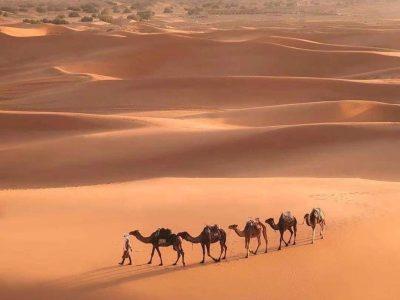
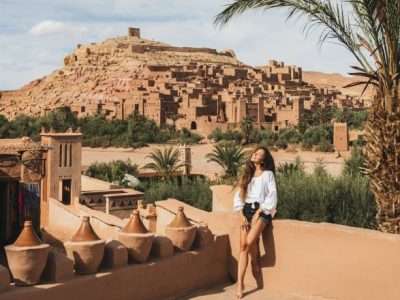
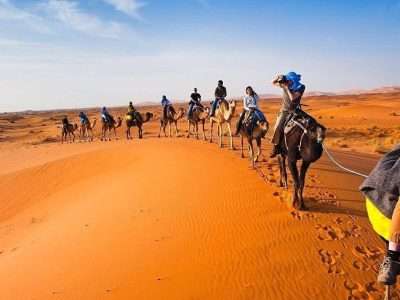
Contact Morocco Best Sahara Tours Agency
For any inquiries or assistance with your Tangier to Sahara tour booking, please don’t hesitate to contact us using the following methods:
Submit the form : Contact us
CALL US: +212 661-731893 | Whatsapp : +212 641‑143386
Please note: Our booking availability may vary depending on the season and demand. We recommend booking in advance to secure your preferred travel dates.
